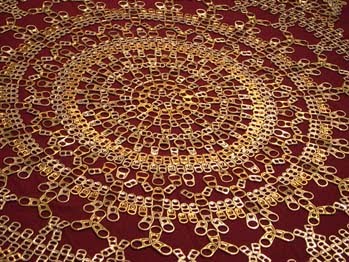An Indonesian – Australian collaborative drawing project
‘Teman gambar’ means ‘drawing friend’. Based on the pen-pal experience many adults around the world remember from childhood, Asialink resident Elly Kent and Tlatah Bocah are collaborating to implement a creative exchange. This exchange aims to connect children who in Indonesia and children in Australian primary schools. Our original exchange focussed on children who were evacuated during the devastating eruptions of Mt Merapi in late 2010; it was a wonderful way for Australian children to show support and care for their Teman Gambar. Since then so many people in Australia and Indonesia have been interested in participating, that our Mt Merapi team is now headquarters for a program that stretches across Java. In Australia, over 500 children have participated, and more are still joining.
In 2011, Teman Gambar decided to join the Big Draw. We put the call out to schools involved in the Teman Gambar project, and two dedicated teachers of Indonesian language in four Australian schools expressed interest. In Indonesia, four primary schools on the slopes of Mt Merapi also joined:
Tully State School, Queensland, Australia
Cardwell State School, Queensland, Australia
Mission Beach State School, Queensland, Australia
Geelong Baptist College, Victoria, Australia
SDK Perontakan (Perontakan Catholic Primary School), Sumber, Central Java, Indonesia
SDK Kanisius (Kanisius Catholic Primary School), Sumber, Central Java, Indonesia
SDN Sumber (Sumber State Primary School), Sumber, Central Java, Indonesia
SDN Keningar (Keningar State Primary School), Sumber, Central Java, Indonesia
In late October, schools in Australia began creating their collaborative drawings. Each school worked together to describe their home town, school and favourite activites on drawings between 3 and 7 metres long. On these initial drawings, students drew their schools, sports, histories, homes and neighbourhoods. Teachers Sue Foley (Queensland schools) and Dewi Claridge (Victorian school) posted the drawings to Teman Gambar founder Elly Kent in Canberra. In November 2011, Elly travelled to Central Java and delivered the drawings to the four Indonesian schools. Teman Gambar co-founder Gunawan Julianto worked together to explain the drawings and the project to students at the four Mt Merapi schools;
Stage 1: Australian school students begin the first drawings which are sent to Indonesian schools.
Stage 2:Indonesian school students complete the drawings begun by the Australian students.
Stage 3: Indonesian students begin the second round of drawings, which are sent in return to Australian schools.
Stage 4: Australian students complete the drawings they have received from Indonesian students.
Stage 5: The story continues……
As the project unfolded, teachers and facilitators kept in touch via email and the dedicated Teman Gambar Facebook Group.
In Indonesia, the students of the Mt Merapi Primary Schools were thrilled and fascinated by the drawings from their Australian peers. An avalanche of questions followed each introduction of the drawings. Where is Tully? What kind of animal is that? What is that big green circle?
Students at Kanisius looking at the drawing from Mission Beach.
Why is their a giant boot in the drawing? What kind of plants do they grow in Queensland?
Unrolling drawing from Tully students with students at Perontakan.
What are the different flags for?
Gunawan with the drawing from Geelong Baptist College at Keningar Primary School.
In a short time, Elly and Gunawan helped the students explore Australian culture. Then the reciprocal drawing began!
Perontakan students get drawing!
Detail from Perontakan….
Detail from Kanisius….
Detail from Sumber….
Detail from Keningar….
As you can see, kids in both countries used this as an excellent opportunity to learn more about their “drawing friends – teman gambar” in their neighbouring country, and to share their own culture and lanuguage with their friends…
SD Keningar was the last stop on out Big Draw tour. As the school finished up classes for the day the heavy rainy-season clouds began to build. Before long, rain was falling on the fertile crops of Mt Merapi, the crops that sustain the livelihoods of her families. Gunawan, myself and my family and the students were hanging out waiting for the rain to ease before heading home. The Australian Rules football field and ball illustrated on the enormous painting/drawing from Geelong Baptist College had been intriguing for the students. It just so happened that my husband, a footy player himself, had his football with him. Rain is part of the game! So our parting photographs with the kids from Keningar, the last school to the top of Mt Merapi’s western slope, were in fact those of Shane (footy player) and Adi (their son) teaching two young fellows from Keningar to fly for the red ball. An all-round cultural experience….
That’s the ball in the top middle! Those Keningar boys were a great mark….
Elly Kent and Gunawan Julianto






